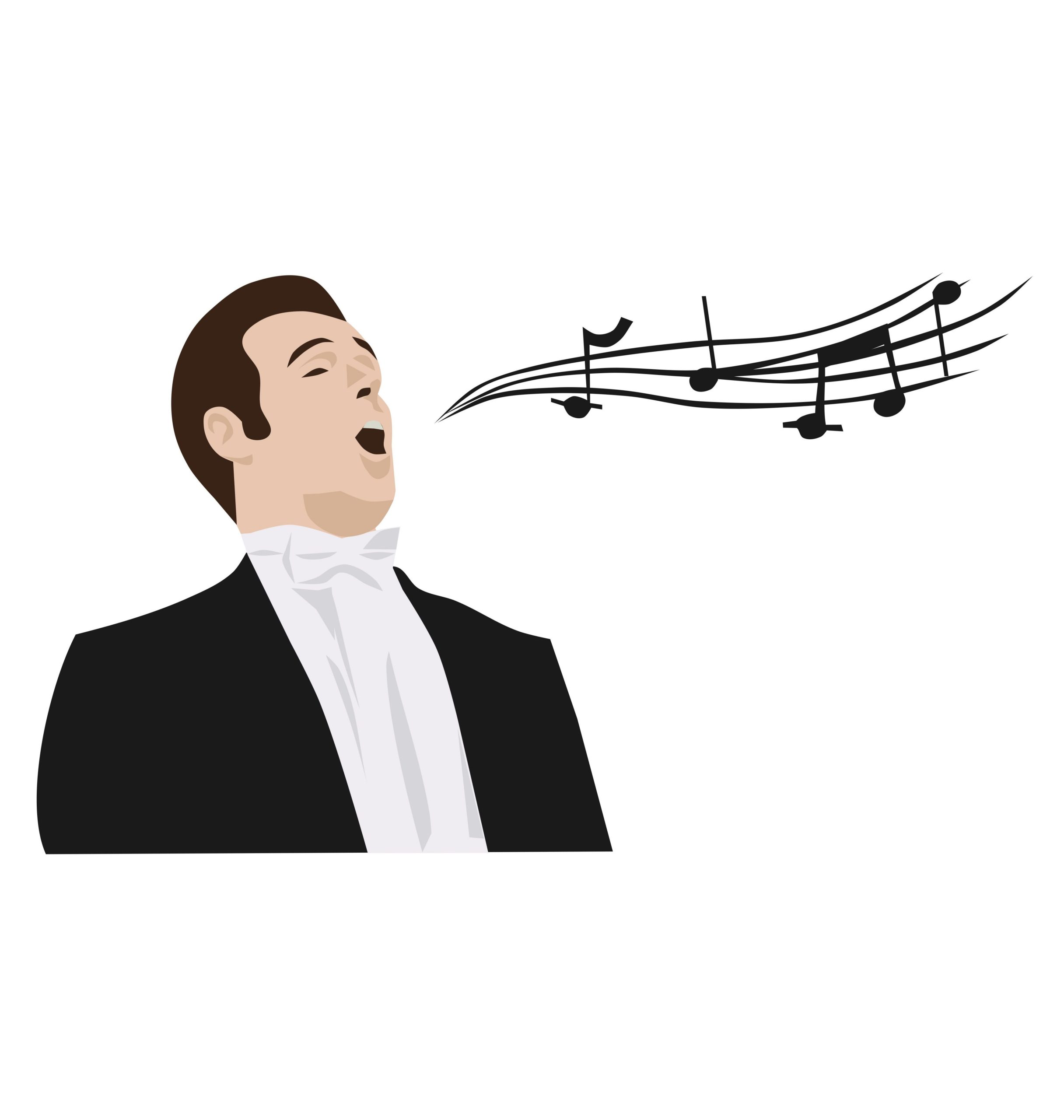Classical Training is Great for Commercial Singing!
One of my greatest joys, but at times, also one of my greatest frustrations, is being a voice teacher. Why, you may ask? Isn’t it the most wonderful job to help people literally find and develop their singing voice? Doesn’t it feel great to build their singing skills and especially their confidence— not only for singing, but in life? Yes, and yes! But, with students who only want to sing contemporary, commercial styles of music, my frustration grows when I know what they need to progress well and more quickly in their vocal studies, yet they resist my advice. And what is that key that quickly unlocks so many vocal doors?— studying classical vocal technique and classical song repertoire. Classical voice training is great for commercial singing!
When I respectfully make this suggestion, this is what I often hear: “Nooooo! I don’t want to sound like an opera singer!” the student cries! And I emphatically say: “Don’t worry, you won’t!” You’ll only sound like one if you want to be one, continuously trying to emulate the aesthetics of the tone quality and style that singing opera demands. But, what if you can use the techniques that opera singers (and classically-trained singers who sing other repertoire in the “legit” music world) use to make your contemporary or commercial singing better, much faster? Wouldn’t that be worth a try?
Definition of Legit vs. Commercial Music/Singing
First, some clarity. “Legit” is short for legitimate, referring to a song that requires a more traditional and classically trained vocal technique and style to perform it. This can include rounded, more sustained and open vowels, excellent diction, the consistent use of vibrato, legato articulation, expressive phrasing, vocal flexibility, and other characteristics normally associated with the performance of opera, oratorio, art songs, sacred music and other classical repertoire. I also include traditional musical theater in the “legit” category, such as the works of Rogers and Hammerstein, or Lerner and Lowe. Generally, legit repertoire is considered more difficult and more complex than commercial music, mostly due to the “chops” or skill and technique level required to sing it.
“Commercial” music is a bit harder to define, as it encompasses a wide variety of musical styles, techniques and approaches. A very basic definition is that it is created, performed, and marketed directly to the public for the express purpose of making money. It is considered more accessible to the average person, and not necessarily requiring the technical ability or complexity of legit song repertoire. Classical music, in its purest forms, was created for the sheer beauty of the art and expression of the composer. Making money from it certainly helped the artist, of course!— but that was not always the primary focus.
Let’s break it down into two main categories: training exercises and song repertoire. Each plays an important role in vocal development, and doing one without the other limits and slows down your singing progress!
Classical Technique Exercises
Traditionally, in what most people call “classical” singing training, I address technique basics that are critical to whatever style of music you wish to sing: Body Alignment, Breathing (how you take in your air and how you manage the breath while singing), Tone Production, Articulation (how the voice moves from pitch to pitch), Flexibility, Phrasing, Stamina/Strength, Diction (how and when you pronounce your vowels and consonants in singing) and so much more! These are all achieved through specific body, breath and vocal exercises, which are performed throughout a singer’s vocal range.
Remember, a technique exercise is a unit of measurement that calibrates and strengthens the voice as it is sung throughout the singer’s natural range. It also reveals weak spots and underlying issues that need to be addressed as part of a singer’s training. A song has a more random melody than an exercise, which may completely bypass areas you may need to work on!
Classical Song Repertoire
Now, while many non-classical singing students may grudgingly see the value in training their voice through traditional vocal exercises, as well as warming up with them before singing their contemporary songs, getting them to sing classical song repertoire is a much harder sell! So, what can singing an art song or aria do for your voice that— for example, today’s pop songs– might not? Plenty!
First, An Important Point
****Before I go further, though, let me qualify the following section of this post with a very important umbrella statement: There are great singers and great songs in almost every genre of music! I have loved and sung many of them myself during my varied singing career (see: https://nadiasmelser.com/about/ for more info), in top 40 bands, in jazz groups, as a backup singer and soloist, and also for my own enjoyment. I am NOT putting down all contemporary/commercial music or commercial performers.
Also, on the flip side of this subject, not all classical music or classically-trained singers are great. And, just because someone is famous, in the classical OR commercial world, it doesn’t mean their technique is perfect, or that they are a good model for your singing studies!
For the purposes of this article, however, I am simply pointing out that generally, the following assertions are more common when studying classical vs. contemporary/commercial song repertoire….

Classical Song Benefits for Vocal Study:
***Written by trained composers who know how to write melodies that support correct vocal production.
***Vocal lines are written to the specifications of exact voice types/ranges.
***Usually longer, less rhythmic phrases that encourage more even, smoother air flow and legato articulation.
***The vibrato needed for most classical vocal style fosters optimal resonance, the use of more air and a bigger, more powerful instrument without strain.
***Usually performed without amplification, singing into a room or theater. This allows singers to sing out (correcty!) and really hear and feel dynamics and their actual power level.
***Overall higher standards of musicianship and consistency of vocal technique “built-in” to the song construction.
***Availability online of videos consistently demonstrating excellent professional models of classical vocal production to study/emulate. The demands of the style create universal standards followed by most professional singers.
Commercial Song Qualities:
—Songs often composed without regard for optimal vocal function. Artists often write specifically for themselves— idiosyncratic to their own vocal strengths and weaknesses. This may not translate easily to other singers, particularly early in voice study.
—Vocal lines are often composed without consideration of the requirements of a specific voice type.
—Generally much more “talky”, speech-like rhythm of lyrics and shorter phrases, interrupted air flow and the use of glottal stops from the throat.
—Wide range of acceptable tone quality. Often straight-tone with little or no vibrato, which can keep the voice small and create more tension in the larynx if not performed with good technique.
—Usually sung on a microphone with amplification through a sound system. This can mask and stifle certain aspects of vocal production and development, especially depending on the efficacy of the monitor system. Hearing yourself through a PA system versus hearing yourself acoustically in a room can be limiting and less accurate. It can also cause you to strain your voice, trying to hear yourself over the sound of the instrumental accompaniment.
—Overall much more varied standards of musicianship and vocal technique inherent in the song construction.
—Video/audio recordings online demonstrate a wide range of vocal performance models, from the original artist to other interpretations of the song. These may or may not be helpful to a singing student’s vocal development. There is often an emphasis on individual style over correct, healthy singing technique.
Technique Vs. Style
One major point to remember: Technique does not equal style, and style does not equal technique! While they can overlap and certainly affect each other, I define technique as the mechanics of how to use use your voice, and style as the end result of applying your musical/aesthetic choices to deliver a song. Both, ideally, should be under your control, through your technical skill and intentional artistic choices.
Famous Commercial Singers Who Are Classically Trained
You may or may not know that many, many performers in the commercial music world have had at least some classical/traditional vocal training. But, to perpetuate the myth that they just woke up one day with their fabulous voice and style in tact and ready for a concert tour–some do not like to admit it!
One wonderful exception is the legendary Tony Bennett, whom we just lost a few weeks ago, just shy of his 97th birthday. Not only was he revered by millions worldwide for his exceptional voice and expressive song interpretation of the Great American Songbook and jazz repertoire (see my earlier post: https://nadiasmelser.com/fall-in-love-with-the-great-american-songbook/), but because of the extreme longevity of his career, spanning multiple generations.
Even with his recent Alzheimers diagnosis, he was singing right up until his final days, and gave a spectacular concert with Lady Gaga (also a classically trained singer!) at Radio City Music Hall in 2021— at the age of 95! He credits his early Bel Canto training for the quality and longevity of his voice.
What is Bel Canto?
The Merriam- Webster dictionary definition:
“operatic singing originating in 17th century and 18th century Italy and stressing ease, purity, and evenness of tone production and an agile and precise vocal technique”.
Bel Canto literally means “beautiful singing”. Tony Bennett was known to share his dedication to Bel Canto vocal training exercises by giving his classical warm-up tapes to other famous artists, to help them develop and maintain their voices as well!
For more information on Bel Canto singing: https://www.britannica.com/art/bel-canto
Here is one of a number of websites you can find online listing current commercial singers who have studied classical voice:
This is just a sample— the tip of the iceberg!
Some Final Thoughts and Encouragement
I hope this post has given you a bit more insight and inspiration to try your hand at new ways of approaching your singing studies! Classical training exercises and repertoire can open new and better doors in your vocal development, faster! But— do this with the guidance of a classically-trained voice teacher who ALSO knows the requirements and authenticity needed to sing commercial styles of music. It’s the magic of applying your classical technique to your contemporary singing in a way that maximizes your production, but that is appropriate and authentic for the style.








Thank you, Nadia. Reading your post is so inspiring, so much good information, and broken down into easily digestible bits.
It is a pleasure to be learning from you. Thank you so very much!
Thank you, Doug! I appreciate the positive feedback!